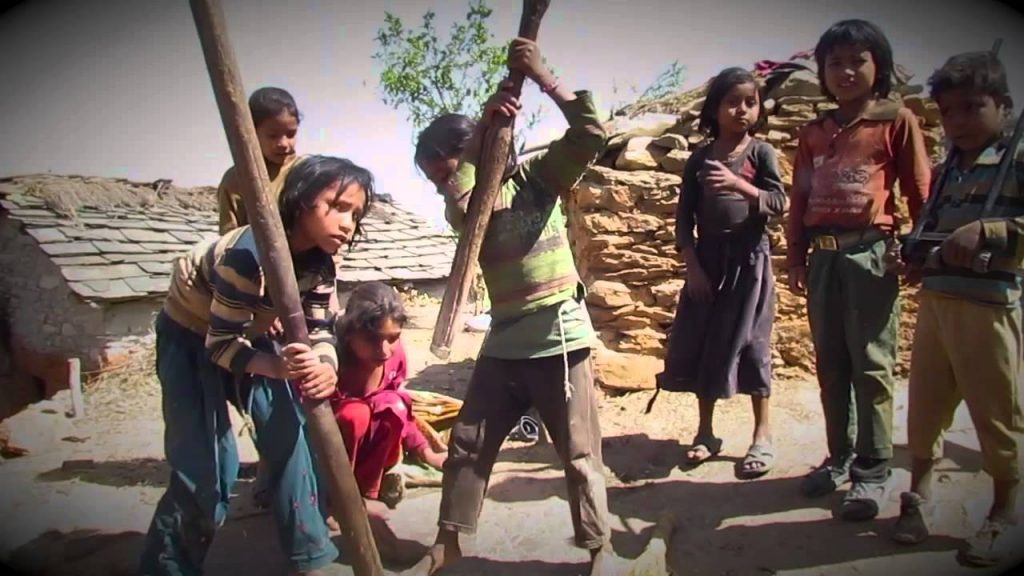By Akanimo Sampson
Hundreds of former bonded labourers in western Nepal are currently benefiting from vocational training under an innovative International Labour Organisation (ILO) scheme. Birendra Chaudhary, now a fully trained and well-paid plumber, is one of them.
The 28 year-old Birendra Chaudhary from far-western Nepal was born into a community that has, for centuries, been trapped in bonded labour.
Under the Kamaya and Haliya system of bonded labour, landlords gave families loans that would give them just enough to get by, forcing them to work to pay off the loan. Both systems were abolished in the 2000s, however many former bonded labourers and their descendants are still very vulnerable, often deprived of arable land and decent employment opportunities.
After leaving school at 19, Birendra went to work in a food processing plant but began to think about migrating to India for work after the plant was closed. However, his life took a different turn after a friend told him about the ILO Bridge project, which offered skills training to former bonded labourers and their families.
“The objective of the ILO Bridge Project in Nepal is to eliminate traditional and state-imposed forced labour systems and to significantly reduce contemporary forms of forced labour, which are often linked to human trafficking,” said Narayan Prasad Bhattarai, National Project Coordinator of the Bridge Project. “Birendra’s story shows that prevention measures, livelihoods support and legal services have given new hope to former victims of bonded labour.”
The ILO Bridge Project is supported by the U.S. Department of Labor, which has provided support to the government’s rehabilitation process to improve the livelihood of freed-Haliyas. It works through four NGOs in Nepal – Rastriya Haliya Mukta Samaj Federation – Nepal (RMHSF-N), Underprivileged Children’s Education Programme (UCEP-Nepal), Rastriya Haliya Mukti Samaj – Kanchapur (RHMS-Kanchanpur), Human Resource Centre (HRC-Bajura).
These NGOs have been involved in selecting beneficiary families and providing skills and employability training, as well as helping them seek employment.
Birendra is one of 600 young people from the Haliya and Kamaiya communities to have benefitted from intensive training in one of three recommended groups of trades: construction, agro-forestry and other vocational skills.
As a result he obtained a certificate from the Council for Technical Education and Vocational Training (CTEVT) and is now a successful plumber. After six months in his new job, he makes an average of 28,000 Nepalese Rupees ($260) a month – much more than he could earn in many other informal trades. “It happens that I can sometimes earn as much as 1,500 Rupees [$13] an hour”, said Birendra.
“My certificate attests to my professionalism, and helps me win more contracts. It also gives me more room to negotiate prices”, he said. “I am in a position to ask my clients whether they need just a quick fix or a serious professional service. I usually convince people when I say that the ILO, a UN agency, has supported my training.”
After only three months, Birendra earned enough to buy a second-hand motorcycle. “I cannot be late for work. Clients can sometimes be very demanding and expect me to rush over to them at short notice. If I can’t get to the client on time, I lose business, so I bought a motorcycle,” he explained.
Bhim Kaini, UCEP’s Programme Facilitator, says Birendra is an inspiration to many Nepalis as he has demonstrated that it is possible to stay in Nepal and earn a decent living, and not be obliged, as so many young people have been, to leave the country to work abroad.
* This material does not necessarily reflect the views or policies of the United States Department of Labour, nor does mention of trade names, commercial products, or organisations imply endorsement by the United States Government.
Funding is however, provided by the United States Department of Labour under cooperative agreement number IL‐27592-15-75-K-1 (Bridge project). 100 percent of the total costs of the Bridge project is financed with Federal funds, for a total of $14,395,138.

